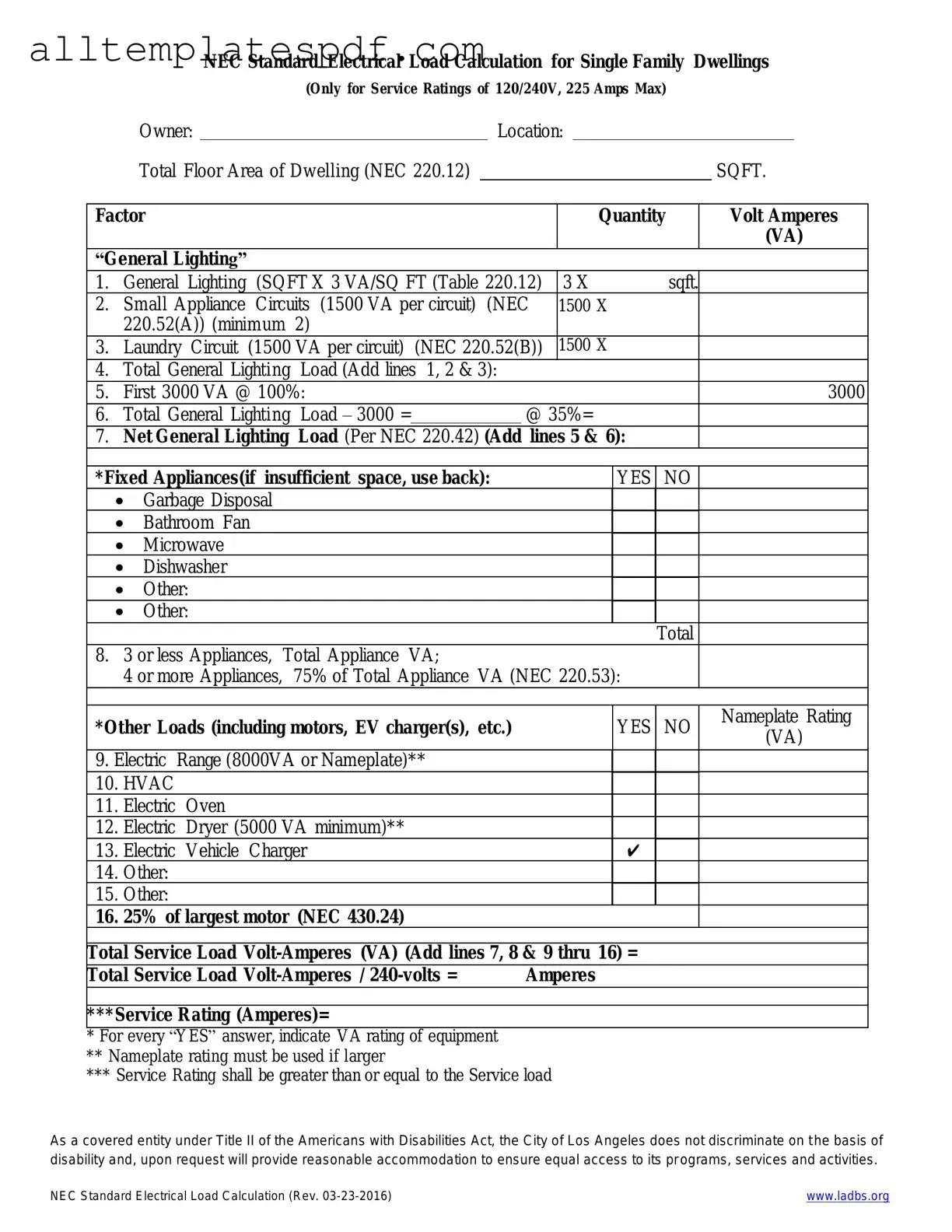Fill Out a Valid LADBS NEC Standard Electrical Load Calculation Form
The LADBS NEC Standard Electrical Load Calculation form is a crucial tool used to determine the electrical load requirements for new construction and renovation projects in Los Angeles. By accurately completing this form, you ensure compliance with local codes and safety standards, which ultimately helps in securing the necessary permits. Ready to get started? Fill out the form by clicking the button below.
Open Editor
